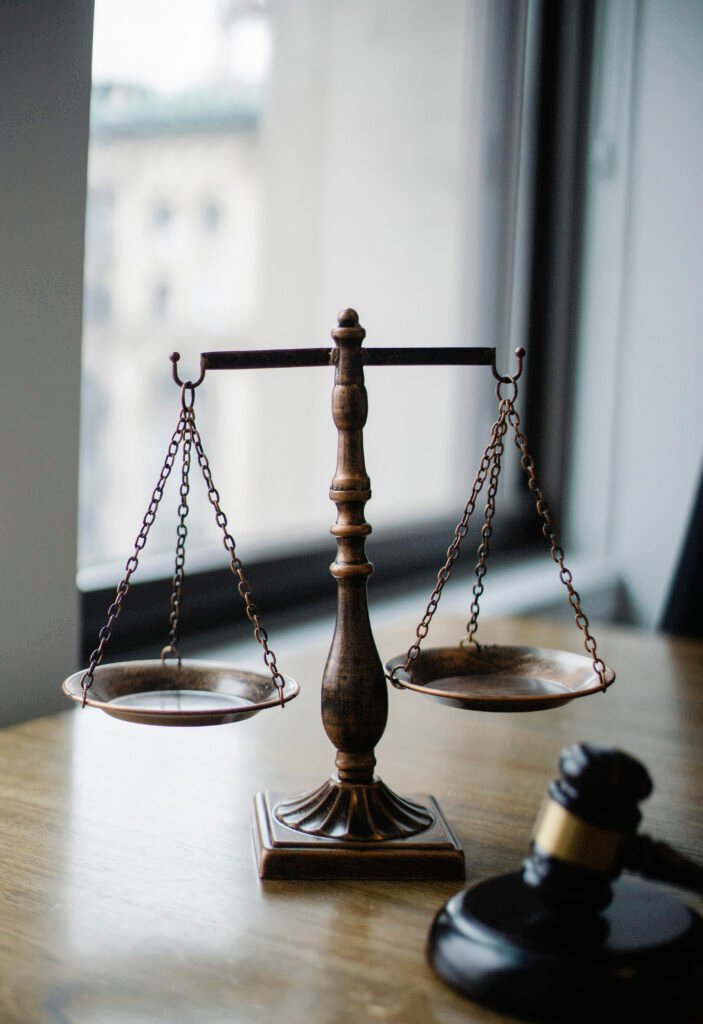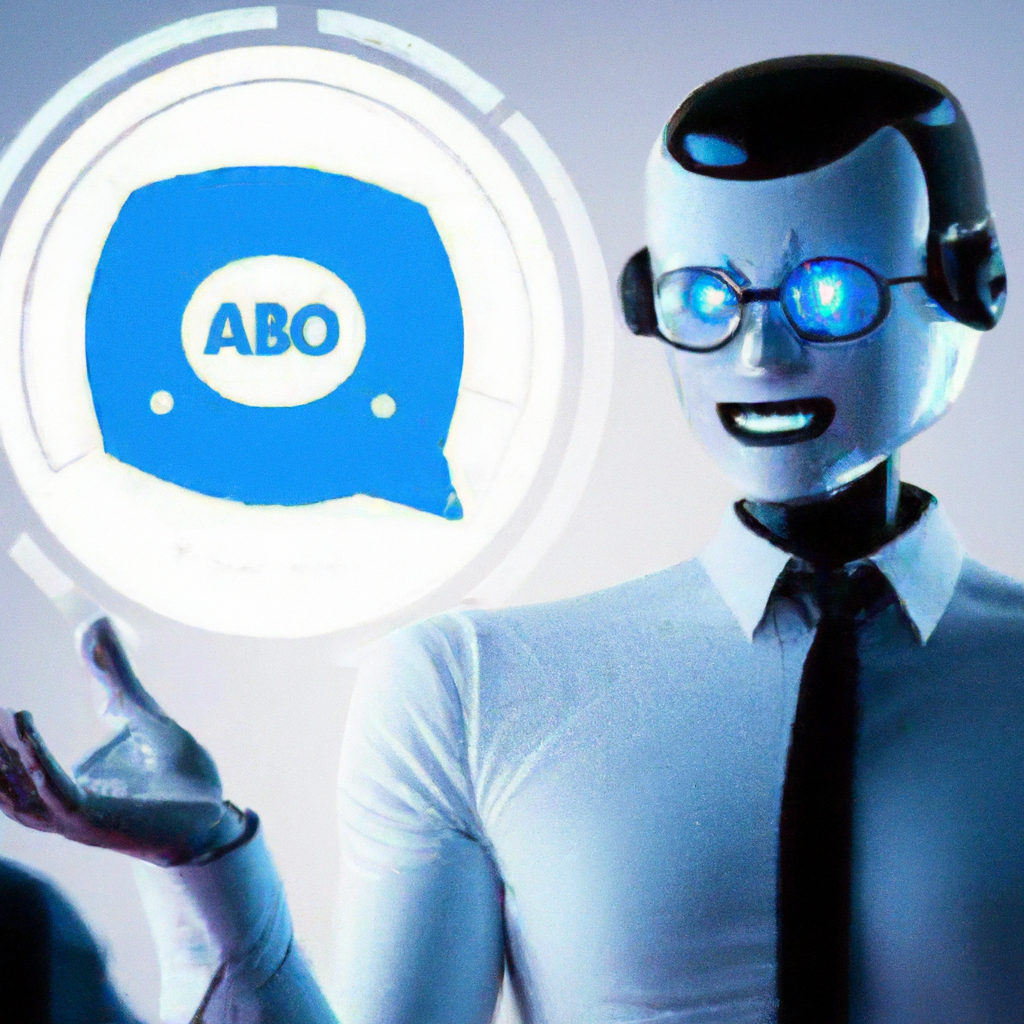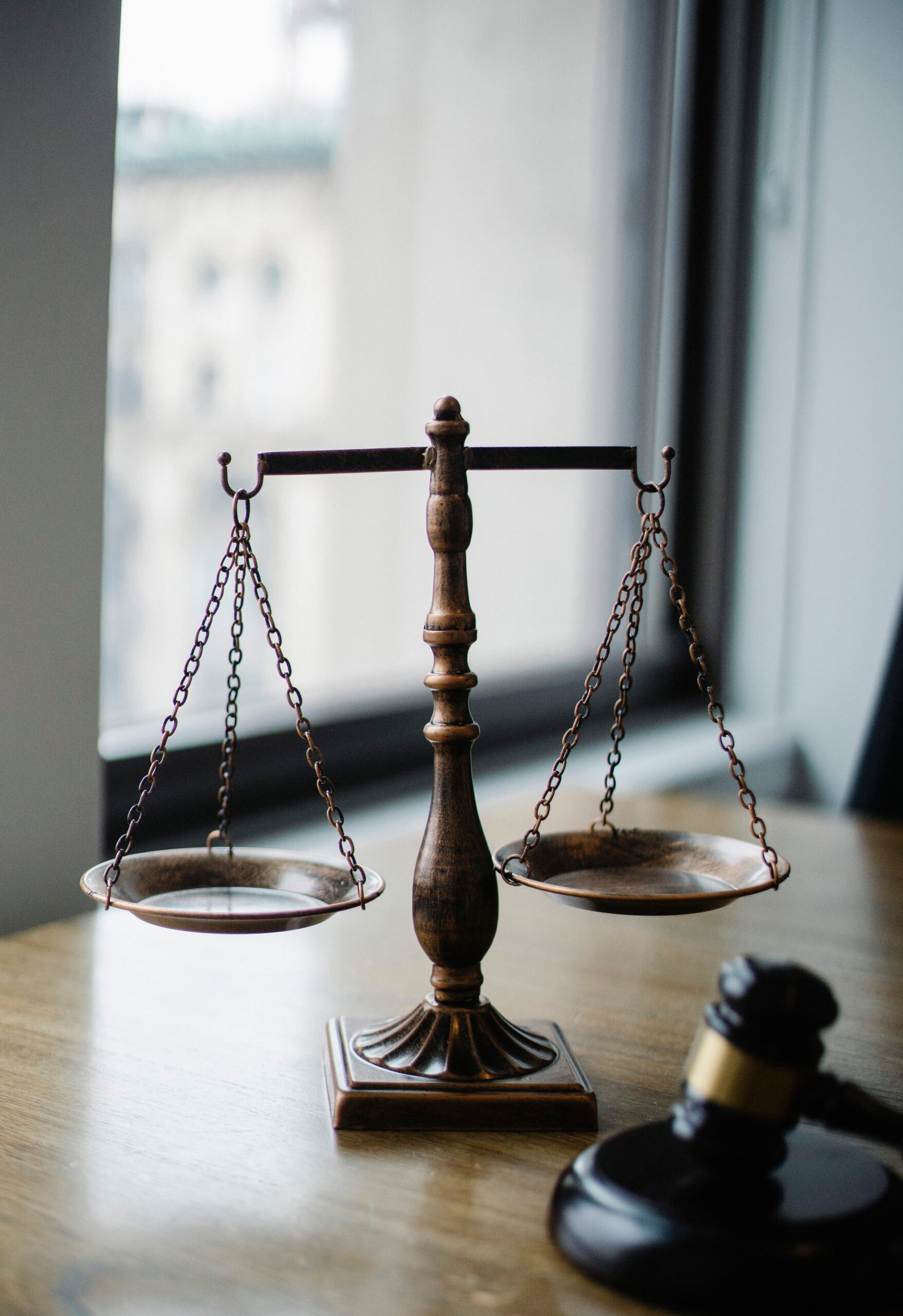Have you ever wondered if chatbots could play a role in legal and compliance matters? In this article, we will explore the potential benefits of incorporating chatbots into the legal industry. From streamlining processes to providing efficient and accurate information, chatbots have the potential to revolutionize the way legal and compliance matters are handled. Join us as we delve into this fascinating topic and discover how chatbots could be your new best friend in the legal world.
1. Introduction
Can chatbots assist in legal and compliance matters? This question has become increasingly relevant as technology continues to reshape the way we interact and conduct business. In this article, we will explore the potential of chatbots in the legal and compliance field and discuss their benefits, applications, challenges, best practices for implementation, and future advancements. Whether you’re a legal professional, compliance officer, or simply curious about the intersection of technology and law, this article will provide valuable insights into the world of chatbots.
2. Understanding chatbots
2.1 Definition
Before diving into the role of chatbots in legal and compliance, it’s essential to understand what chatbots are. Chatbots are computer programs designed to simulate human conversation through text or voice interactions. They leverage technologies such as natural language processing (NLP) and artificial intelligence (AI) to understand and respond to user queries. Chatbots can be deployed across various platforms, including websites, messaging applications, and even voice-enabled devices like smart speakers.
2.2 Types of chatbots
Chatbots can be categorized into two main types: rule-based and AI-powered chatbots. Rule-based chatbots operate based on a pre-defined set of rules and responses. They are limited in their ability to handle complex queries and require constant updates to accommodate new scenarios. AI-powered chatbots, on the other hand, use machine learning algorithms and NLP to understand and respond to user input in a more intelligent and context-aware manner. These chatbots can learn from past interactions and improve their performance over time.
2.3 How chatbots work
Under the hood, chatbots rely on a combination of technologies to function effectively. The core components of a chatbot include:
-
Natural Language Processing (NLP): NLP enables chatbots to understand and interpret human language, including its nuances and context. It involves tasks such as text parsing, entity recognition, and sentiment analysis.
-
Knowledge Base: Chatbots require a knowledge base that serves as a repository of information. This knowledge base can be pre-defined and curated by experts in the field or generated through machine learning techniques.
-
Dialog Management: Dialog management involves maintaining the flow of conversation between the chatbot and the user. Chatbots use techniques like intent recognition and slot filling to understand the user’s intent and gather the necessary information to provide appropriate responses.
-
User Interface: The user interface of a chatbot can take various forms, ranging from a simple text-based chat window to a voice-enabled interface. The user interface is responsible for capturing user input and presenting the chatbot’s responses.

3. Importance of Legal and Compliance Matters
3.1 Legal and compliance challenges
Legal and compliance matters are critical for businesses across various industries. Failure to adhere to legal and regulatory requirements can result in severe consequences, including financial penalties, reputational damage, and legal liabilities. However, navigating the complexities of legal and compliance landscapes can be challenging, time-consuming, and resource-intensive. Common challenges in legal and compliance include:
-
Large Volume of Information: Legal professionals and compliance officers often have to sift through vast amounts of data, including laws, regulations, case precedents, and contractual documents. This process can be overwhelming and prone to errors.
-
Complexity and Ambiguity: Legal language and concepts can be complex and difficult for non-experts to understand. Ambiguities in laws and regulations further complicate the interpretation and application of legal requirements.
-
Changing Regulatory Landscape: Laws and regulations are constantly evolving, requiring organizations to stay updated and ensure compliance with new requirements. This necessitates ongoing monitoring and analysis of legal developments.
3.2 Role of technology in legal and compliance
Technology has the potential to address many of the challenges faced in legal and compliance matters. By leveraging automation, data analytics, and AI, organizations can streamline their legal and compliance processes, improve decision-making, and reduce risks. Chatbots, in particular, can play a crucial role in transforming the way legal and compliance tasks are performed.
4. Potential Benefits of Chatbots in Legal and Compliance
4.1 Increased efficiency
Chatbots can significantly enhance the efficiency of legal and compliance operations. By automating routine tasks such as legal research, contract review, and compliance monitoring, chatbots free up valuable time for legal professionals and compliance officers. This allows them to focus on more strategic and complex tasks that require human expertise.
4.2 Cost savings
By automating manual processes, chatbots can help organizations save costs associated with hiring additional staff or outsourcing legal and compliance tasks. The use of chatbots can lead to significant time savings, increased productivity, and improved resource allocation.
4.3 24/7 availability
Chatbots excel in providing round-the-clock availability and instant responses. Users can interact with chatbots at any time, eliminating the need to wait for human assistance. This is particularly beneficial for businesses operating across different time zones or dealing with urgent legal or compliance matters.
4.4 Standardization and consistency
Chatbots can ensure standardization and consistency in legal and compliance processes. They follow pre-defined rules, use consistent language, and provide accurate and up-to-date information. This reduces the risk of errors and inconsistencies that may arise from manual processes.
4.5 Reduced human error
Human error is inherent in any manual process, including legal and compliance tasks. Chatbots can minimize human errors by providing accurate and consistent responses, flagging potential issues, and automating repetitive tasks. This helps organizations improve the accuracy and quality of their legal and compliance activities.

5. Applications of Chatbots in Legal and Compliance
5.1 Legal research and case analysis
Legal research is a time-consuming task that involves analyzing statutes, case precedents, and legal opinions. Chatbots can assist legal professionals by quickly retrieving relevant information, summarizing complex legal concepts, and providing insights on case law. They can help speed up the research process and enhance the accuracy and comprehensiveness of legal analysis.
5.2 Contract management and review
Contract management and review are critical aspects of legal operations. Chatbots can streamline these processes by automatically extracting key terms and clauses from contracts, flagging potential risks or inconsistencies, and providing recommendations for revision. This accelerates the contract review process, improves accuracy, and reduces the risk of oversight.
5.3 Compliance monitoring and reporting
Compliance monitoring involves tracking and analyzing regulatory changes, internal policies, and operational practices to ensure adherence to legal and regulatory requirements. Chatbots can assist compliance officers by monitoring relevant sources of information, alerting them to changes, and generating compliance reports. This enables proactive compliance management and helps organizations stay ahead of regulatory obligations.
5.4 Client interaction and support
Chatbots can enhance client interaction and support in the legal and compliance realm. They can handle routine inquiries from clients, provide information about legal services or compliance requirements, and assist in scheduling appointments. Chatbots can also direct clients to the appropriate legal expert or compliance officer based on their specific needs, ensuring efficient and personalized service.
6. Challenges and Limitations of Chatbots in Legal and Compliance
6.1 Ethical and privacy concerns
As with any technology-driven solution, chatbots raise ethical and privacy concerns. Organizations must ensure that chatbots comply with data protection and privacy regulations, as they often handle sensitive information. Additionally, chatbots should be programmed to prioritize ethics and adhere to legal and professional codes of conduct when interacting with users.
6.2 Complexity of legal language
Legal language is complex and can be challenging for chatbots to interpret accurately. Ambiguities, nuances, and the context-dependent nature of legal terms and concepts pose difficulties in developing chatbots that can understand and respond appropriately to legal queries. Continued advancements in natural language processing and AI are needed to overcome this limitation.
6.3 Lack of human judgment
Chatbots lack the ability to exercise human judgment, which is often crucial in legal and compliance matters. While chatbots can provide information and recommendations based on pre-defined rules and patterns, they may struggle with subjective or nuanced scenarios where legal expertise and contextual understanding are essential.
6.4 Integration with existing systems
Integrating chatbots with existing legal and compliance systems can be challenging. Chatbots need to access and update information from multiple sources, such as case management systems, document repositories, and regulatory databases. Ensuring seamless integration and data synchronization between chatbots and these systems requires thoughtful planning and technical expertise.

7. Best Practices for Implementing Chatbots in Legal and Compliance
7.1 Clearly defined goals and use cases
Before implementing chatbots, organizations should establish clear goals and identify specific use cases where chatbots can add value. This ensures alignment with business objectives and enables focused development and deployment of chatbot solutions.
7.2 Robust security measures
Given the sensitive nature of legal and compliance matters, organizations must prioritize robust security measures when implementing chatbots. This includes encryption of data, access controls, and regular security audits to detect and mitigate potential vulnerabilities.
7.3 Regular monitoring and updating
Chatbots are not a “set it and forget it” technology. Organizations should monitor the performance of chatbots regularly and gather feedback from users to identify areas for improvement. Updates to the chatbot’s knowledge base and algorithms should be undertaken to ensure the accuracy and relevance of responses.
7.4 Seamless integration with human experts
While chatbots have their advantages, human expertise remains crucial in legal and compliance matters. Organizations should ensure seamless integration between chatbots and human experts, enabling a collaborative approach that combines the efficiency of automation with the insights and judgment of legal professionals and compliance officers.
8. Case Studies: Successful Implementations of Chatbots in Legal and Compliance
8.1 Case study 1: Chatbot for contract review
A multinational law firm implemented a chatbot to streamline its contract review process. The chatbot extracted key terms and clauses from contracts, compared them against predetermined criteria, and flagged potential risks. This significantly reduced the time and effort required for contract review, enabling the firm to deliver faster and more accurate services to clients.
8.2 Case study 2: Chatbot for legal research
A legal research firm developed a chatbot that could understand complex legal queries and provide relevant case law and legal analysis. Legal professionals could interact with the chatbot, receive summarized case summaries, and access related legal research resources. This enhanced the efficiency of legal research, enabling lawyers to access information quickly and make more informed decisions.
8.3 Case study 3: Chatbot for compliance monitoring
A compliance department in a regulated industry deployed a chatbot to monitor regulatory changes and generate compliance reports. The chatbot scoured regulatory websites, analyzed changes in laws and regulations, and alerted compliance officers to relevant updates. This proactive approach to compliance monitoring helped the organization stay ahead of regulatory requirements and reduce compliance-related risks.

9. Future Outlook: Advancements in Chatbot Technology for Legal and Compliance
9.1 Natural language processing and understanding
Advancements in natural language processing and understanding will continue to enhance the capabilities of chatbots in legal and compliance. Chatbots will become better at interpreting legal language, understanding the context of queries, and providing more accurate and relevant responses. This will contribute to the further automation of routine legal and compliance tasks.
9.2 Machine learning and AI capabilities
Machine learning and AI will play an increasingly important role in chatbot technology. Chatbots will be able to learn from user interactions, adapt to new scenarios, and improve their performance over time. Machine learning algorithms can help chatbots identify patterns, analyze legal precedents, and provide recommendations based on evolving legal landscapes.
9.3 Hybrid approach combining chatbots and human expertise
The future of chatbot technology in the legal and compliance field lies in combining the strengths of chatbots with human expertise. Organizations may adopt a hybrid approach, where chatbots handle routine tasks, perform initial assessments, and provide recommendations, while legal professionals and compliance officers focus on more complex and strategic matters that require higher-order thinking and judgment.
10. Conclusion
In conclusion, chatbots can indeed assist in legal and compliance matters by increasing efficiency, reducing costs, providing 24/7 availability, ensuring standardization, and minimizing human errors. They can be applied in various areas, such as legal research, contract management, and compliance monitoring. However, chatbots also come with challenges and limitations, such as ethical concerns, the complexity of legal language, and the lack of human judgment. By following best practices, organizations can successfully implement chatbots in the legal and compliance field and unlock their potential for transformative change. As advancements in chatbot technology continue, we can expect further improvements in natural language processing, AI capabilities, and the integration of chatbots with human expertise. Chatbots are poised to revolutionize the way legal and compliance tasks are performed, enabling organizations to navigate the complexities of the legal landscape with greater efficiency, accuracy, and agility.

